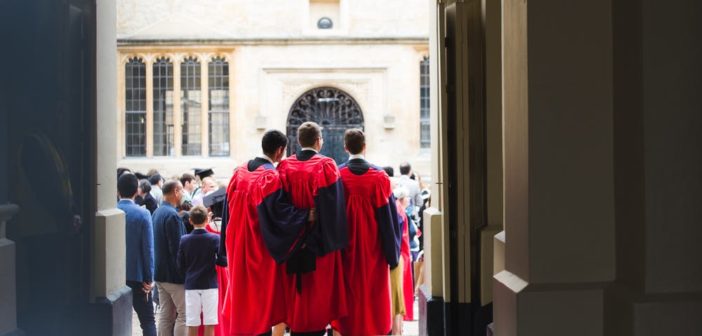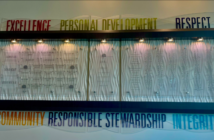By: Cassidy Whitaker, Staff Writer
In early January, President Obama briefly described a proposed federal plan to provide free community college to certain students for two years. This announcement was made during a speech at Pellissippi State Community College in Knoxville, Tennessee. Following this speech, the White House released a video in which the President briefly outlined the plan. President Obama then officially proposed it to the American people during his most recent State of the Union address, which took place in January 2015.
President Obama’s main goal is to have community college be accessible for everybody and for the first two years of it to be free for “…everybody who is willing to work for it.” This is why most of the summaries of the plan state that free community college will only be available to “certain” or “some” students. The President simply wants to provide this aid to hard working and responsible students who are committed to their betterment through education. An additional goal of the President’s proposed plan is to train the American workforce to compete with any country in the world. It is his belief that providing free community college, for the first two years, to deserving students will help to accomplish this.
Following President Obama’s official proposal of his plan in his State of the Union address, the White House specified the general details in order for the American people to be able to easily and fully understand the plan. The plan would grant two years of free community college to students who go to school at least half of the time, maintain a GPA of 2.5 or higher, and remain enrolled in classes. Community colleges would be required to allow students to transfer to four-year universities or to train students in high-demand occupational areas. Federal funding would pay for 3/4th of the cost to put the plan into effect and to maintain it, while the states would pay 1/4th.
The main pros of President Obama’s proposed plan of free community college include up to nine million students benefiting per year, if every state participates, in addition to an average savings of $3800 each year in tuition, as projected by the White House. Additionally, free community college could potentially have long-term benefits not solely for the qualifying students that receive the benefit of free education, but also for American society in general. Studies have shown that people who completed their associate’s degree at a two-year community college make a substantially greater amount of money than those who only have a high school degree.
In an executive summary released in 2014, the American Association of Community Colleges stated that community college benefits society as a whole in numerous ways. A college education, even a two-year degree, has been proven to inspire and promote changes in lifestyle that cost society less for health expenses, crime, and unemployment. Additionally, the skills taught and provided to students at community colleges benefit American businesses by increasing and improving worker productivity. Together, the increased output of businesses plus the higher wages earned by completers of community college enact success and strengthen the economy.
On the other hand, a con and very prevalent concern of the proposed plan deals with capacity, or rather, the lack thereof. According to the National Center for Education Statistics, as of 2011, the U.S. currently only has 1,729 two-year, or community colleges. A number of states that have individually tinkered with the idea of providing subsidy to students and free community college programs have experienced their systems becoming wildly overwhelmed. If free community college is put into effect nationally, the fear of many skeptics is that too many people who qualify for the benefits will begin to take advantage of the two years of free education in order to save money and community education institutions will become overcrowded.
A poll taken of ten Saint Leo University students found that exactly half are for the implementation of free community college in the United States, while the other half are not.
“…Offering [community college] for free might reduce some of the hurdles that help students convince themselves that higher education is something that they actually want to do. I see a lot of students going from one year to the next just because they’ve been told that’s what they’re supposed to do and they don’t actually have any genuine interest in learning. The elitist fear is that allowing access to everybody is going to water down the system. It’s going to provide opportunities, and I’m all for opportunity; I just want to make sure that those who are taking the opportunity are going to put it to good use.” said Chris Friend, Saint Leo University English Professor and Managing Editor and Producer at digital journal of learning, teaching, and technology, Hybrid Pedagogy.
There is a great deal of speculation and chatter among the media that Obama’s likely expensive plan will not acquire quite enough bipartisan support and therefore the current Republican-dominated Congress will not pass any form of legislation that attempts to put the free community college plan into effect. In the video briefly summarizing his plan , available on whitehouse.gov, President Obama remarked, “I hope we’ve got a chance to make sure that Congress gets behind these kinds of efforts to ensure that even as we rebound and grow in 2015, that it benefits everybody and not just some.” A spokesperson for the office of Speaker of the House John Boehner described his instant feelings of skepticism regarding the President’s plan in a statement in which he remarked, “With no details or information on the cost [to put the plan into effect and to maintain it], this seems more like a talking point than a plan.” Additionally, Boehner himself stated, “Still, 60 billion dollars is a lot of money…you can’t just shake it off.” To clarify, the White House stated that the sixty billion dollar cost of the program would be required for funding over the course of ten years.
Two main concerns of the current Republican-controlled Congress could likely hinder legislation being passed that puts the free community college plan into effect: skepticism that the cost would be too great and hesitation to support an initiative made by the Obama administration. Numerous reports and polls have already shown that enough public support is there; so, whether congressional members listen to the majority of people in support or not, the plan’s fate is going to ultimately be in the hands of Congress.
“This shouldn’t be a Republican issue or a Democratic issue, it’s an American issue.” said President Obama in his speech at Pellissippi State Community College. The goal is not to give the political parties another issue to argue over, it is simply to make the gift of education easier for all to attain.





